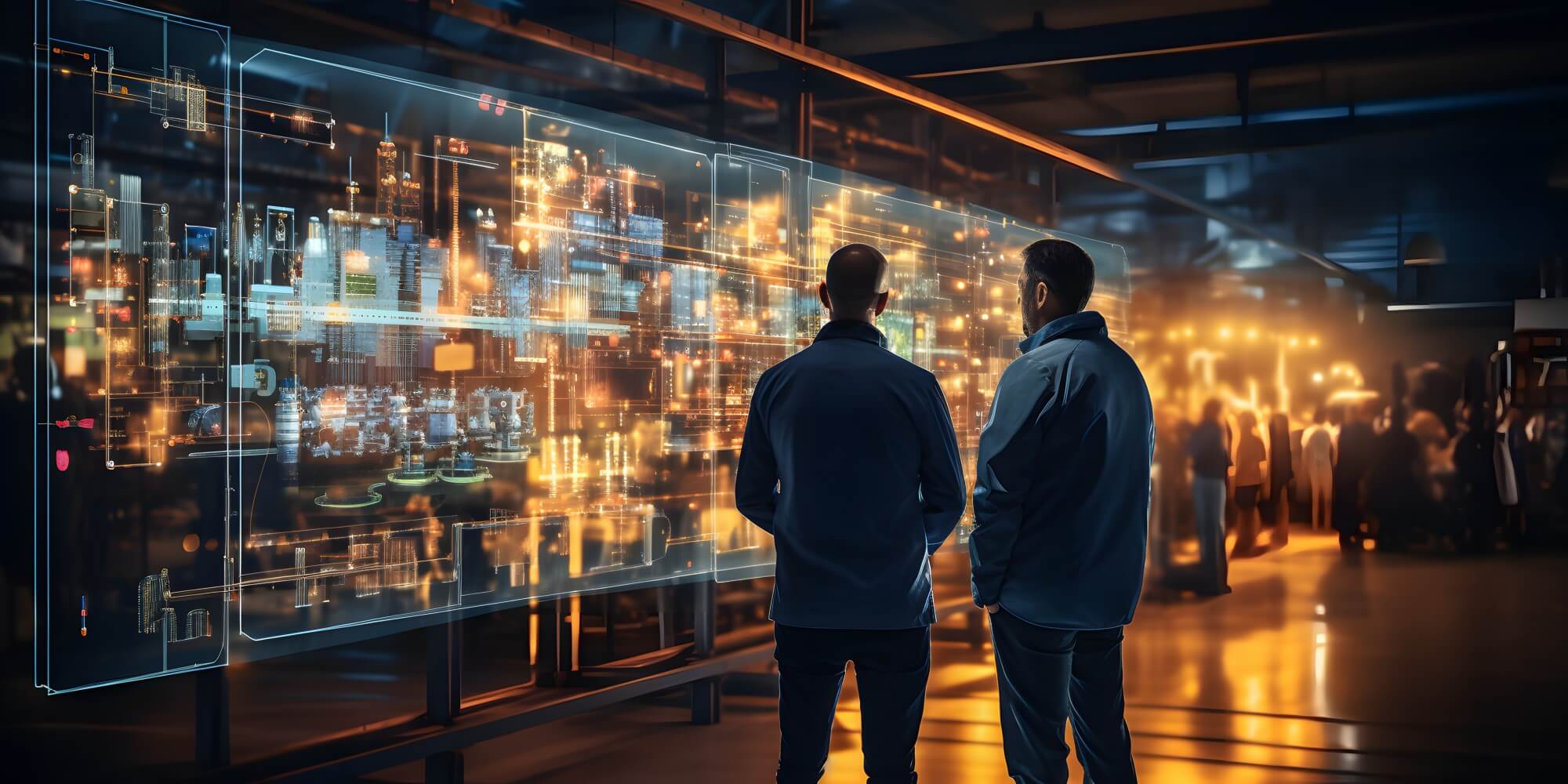
CNC machining has long been the cornerstone for industries requiring precision-manufactured parts. However, the integration of artificial intelligence (AI) and robotics in CNC machining promises to redefine efficiency, accuracy, and productivity.
From aerospace and defence to advanced manufacturing, there’s a growing push to adopt intelligent systems that boost performance and offer tighter control over quality and timelines. These industries demand accuracy, repeatability, speed, and security—all areas where AI is making significant strides.
Beyond production efficiencies, cybersecurity is becoming a key concern for CNC environments, especially in government-regulated industries. With sensitive intellectual property and confidential contracts at stake, protecting networks is no longer optional.
From AI-powered scheduling to real-time cybersecurity threat detection, this article explores the promise and challenges of AI in CNC machining. Whether you’re a senior buyer evaluating shop capabilities or a design engineer seeking reliable production partners, understanding how AI integrates into today’s high-mix, low-volume manufacturing environments can help you make more informed decisions.
AI in CNC Machining: What It Actually Means
AI in the CNC machining process isn’t about machines replacing humans—it’s about making human teams faster, more innovative, and more efficient. In practice, this means using real-time data, machine learning, and pattern recognition to optimize machining processes from start to finish.
AI systems can learn from large datasets, recognizing patterns in past jobs and applying those insights to current operations. Whether it’s tool wear, material stress behaviour, or optimal cutting speeds, AI helps identify what’s worked before and what to avoid.
This data-driven approach extends to feedback-based optimization. Machines adjust their processes based on real-time input—such as spindle loads, vibration feedback, or coolant temperatures—to improve cut quality and prevent errors before they occur.
AI doesn’t just collect data, it acts on it. The result is faster setups, tighter tolerances, and better use of machine time. For decision-makers, this means better turnaround and more confidence in part quality, especially when working with complex or one-off parts in a high-mix environment.
AI CNC Programming: Reducing Setup Time and Errors
The first stages of any CNC project—design interpretation, programming, and setup—are crucial for downstream success. In industries such as defence, where precision and repeatability are essential, AI and robotics are helping to streamline these front-end processes.
Traditional CNC programming strategies often require manual input of tool paths, feeds, and speeds—a time-consuming and error-prone task. AI-driven systems, however, can automatically analyze CAD models, apply proven strategies, and generate optimized programs in a fraction of the time.
Imagine a system that learns from hundreds of completed jobs. It doesn’t just guess—it recommends the most effective tool paths and speeds based on proven results.
AI-based programming tools can suggest:
- Optimal tool paths based on material and geometry
- Feed and speed adjustments for different sections of the part
- Material removal machining strategies that reduce stress and cycle time
AI also integrates directly with CAD/CAM software, facilitating the automation of the transition from design to production. This predictive programming allows for better planning, fewer delays, and reduced rework.
It reduces the manual labour involved—but the operator’s oversight is still critical. You still need someone making sure it’s doing what it should.
On the setup side, robotics further reduces human error. Automated setup systems ensure that fixtures and tools are aligned precisely and repeatably, which is critical in high-mix, low-volume runs where every setup may be different.
Real-Time AI in CMM Inspections and Quality Control
Quality control is another vital part of CNC machining operations, and CMM (Coordinate Measuring Machine) inspections are the gold standard. However, traditional inspections can create bottlenecks, especially when parts are complex or have tight tolerances.
AI enhances this process by analyzing historical inspection data and learning where problems tend to occur. It allows the system to prioritize high-risk areas—such as edges, corners, or thin walls—that are more likely to deviate from specifications.
Some AI-enabled systems can even guide inspection arms in real-time, adjusting probing angles and paths based on the complexity of the shape or previous deviations. This ability not only speeds up the inspection process but also ensures more consistent results.
In industries such as aerospace or defence, where even a minor flaw can lead to catastrophic failure, this kind of intelligent quality control is a game-changer. It reduces inspection time, catches issues early, and helps close the loop between production and QA.
Predictive Maintenance and Scheduling Optimization
One of the most promising applications of AI in CNC machining is predictive maintenance, which utilizes sensor data and machine learning to anticipate potential issues before they lead to downtime.
Instead of waiting for a spindle to fail or a tool to break, AI can monitor things like:
- Spindle temperature trends
- Vibration patterns
- Coolant flow and pressure
- Run-time anomalies
Monitoring enables maintenance teams to intervene at just the right time, thereby extending machine life and preventing unplanned outages. It also gives purchasing managers better visibility into equipment reliability and service costs.
AI also shines in scheduling optimization. In high-mix, low-volume environments, organizing jobs, tools, and machine availability is a constant juggling act. AI can quickly identify scheduling gaps, adjust priorities based on rush jobs, and recommend setups that minimize the need for changeovers.
The result? Less idle time, better throughput, and a more agile response to shifting customer demands.
AI and Cybersecurity in CNC Environments
With AI driving more connected and automated systems, cybersecurity has become a critical issue for modern CNC operations. For manufacturers working in sensitive sectors—such as defence, aerospace, or medical device production—protecting intellectual property is as essential as the machining itself.
Ben Machine CEO Michael Iacovelli shared a behind-the-scenes look at how modern CNC shops are adapting:
“We actually engage in a lot of AI cybersecurity…like CrowdStrike…that monitor our network and determine whether there’s activity that’s outside of the norm.”
AI-driven security platforms constantly monitor machine networks, flagging any anomalies—whether it’s a strange login attempt or an unusual file transfer. If something’s off, these systems can isolate machines, cut off access, and prevent a potential breach from spreading.
These tools go beyond firewalls; they’re proactive systems trained to detect suspicious behaviour in real time. That’s essential when handling proprietary designs or working under government compliance regulations.
AI also helps audit data flows across connected machines, flagging outdated firmware, blocked updates, or unauthorized devices on the network. This layer of digital hygiene builds trust with clients and supports compliance for ITAR, CMMC, or other defence-grade requirements.
For companies like Ben Machine, this isn’t a side project—it’s a core part of the operation. By investing in AI-driven cybersecurity, forward-thinking machine shops show they’re not just protecting parts, they’re protecting partnerships.
Challenges and Limitations of AI in CNC Machining
AI is powerful, but it’s not a silver bullet. One of the most significant limitations currently is the quality of data being input into the system, particularly concerning 3D model files.
Many CAD models lack detailed specifications, such as geometric dimensioning and tolerancing (GD&T), surface finish notes, or assembly context. That missing data can make it difficult for AI to generate an entirely accurate CNC program without human input.
Some other real-world challenges include:
- High upfront costs for AI software and integration
- Compatibility issues with legacy systems
- Learning curve for operators and programmers
- Cybersecurity risks if networks aren’t properly managed
- Algorithm limitations with unique or never-before-seen geometries
- Regulatory barriers in the government or aerospace sectors
And then there’s the risk of over-automation—relying too heavily on AI without proper oversight. AI may be able to recommend a tool path, but a human still needs to verify whether that path is suitable for a specific fixture setup or customer tolerance.
For now, a hybrid approach works best: AI enhances efficiency and supports decision-making, while skilled machinists and engineers retain full control over the final outcomes.
Looking Ahead: The Road to Smarter CNC Shops
The integration of AI and robotics with CNC machining represents a transformative shift. While challenges exist, the potential benefits far outweigh them. As industries continue to evolve, the emphasis on precision, efficiency, and reliability will only grow.
For forward-thinking businesses and industry leaders, now is the time to embrace the AI-driven future of CNC machining. But that doesn’t mean going all-in overnight. The smartest shops are taking a measured approach—integrating AI where it brings the most value, while keeping skilled human operators in control.
By combining a unique manufacturing process model with the strategic use of AI, companies like Ben Machine are leading the way. The focus remains the same: deliver quality parts, on time, every time—with the help of smarter tools and trusted expertise.







